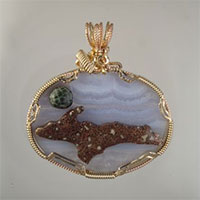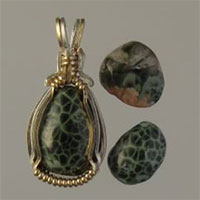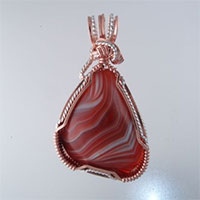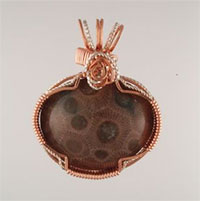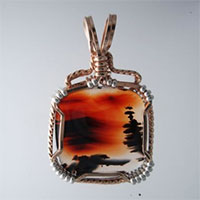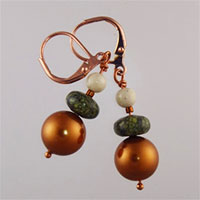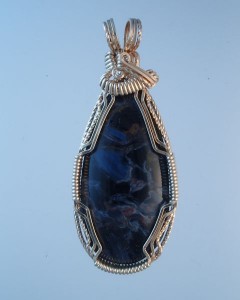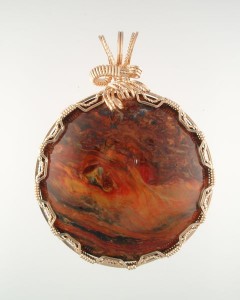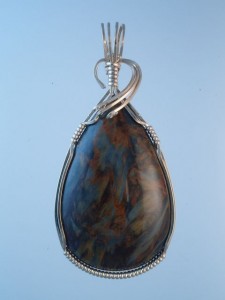I have difficulty when in the presence of high quality Pietersite. I just have to have it. In Tucson this year I told Bonnie I did not need any more Pietersite but the first thing I bought at the show was Pietersite cabochons. Many people are not familiar with Pietersite but when they see it, they want it! It has a magical shimmer, similar to tiger eye, but deeper and more eye-catching.
I can tell you that Pietersite is a pseudomorph variety of quartz. It has the outward appearance of Crocidolite fibers (asbestos), but this mineral has been completely dissolved with quartz taking on its fibrous formations.
The play of light that rolls across the stone takes on a cats eye appearance. Multiple colors and hues streak and swirl in all directions similar to brush strokes. Crocidolite’s original color is blue, so blue (in its wide range of shades) is the most dominant Pietersite color sharing the palette with rusty reds, golds and browns.
Pietersite is one of the more recent mineral discoveries. It was found in Namibia, in Southwest Africa in 1964. I have been told by the miners that it is found in the river banks and the high quality Pietersite is not widespread. I can personally tell you that Pietersite is exceedingly difficult to polish. I cannot come close to the cabochons I find in Tucson with their glass-like surfaces.
High quality Pietersite is not inexpensive, but worth it. The best stones are perceived almost as a holographic image, with a three dimensional depth. At every show people are awestruck by a featured piece of Pietersite jewelry. It is hard to capture this depth in a photo. You can be sure our pendants are all beautiful, both the stone and the wire wrap.


